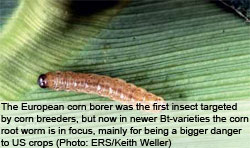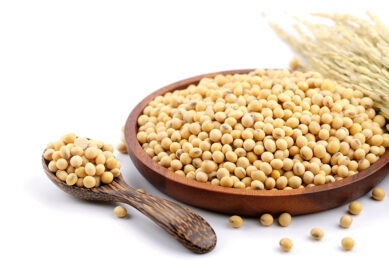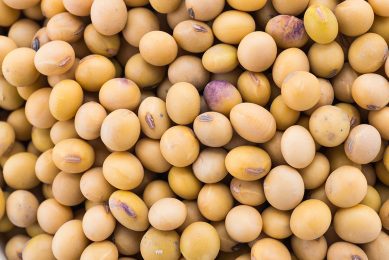Steady growth of GE corn and soybeans in US

US farmers have adopted genetically engineered (GE) crops widely since their introduction in 1996, notwithstanding uncertainty about consumer acceptance and economic and environmental impacts. Soybeans and cotton genetically engineered with herbicide-tolerant traits have been the most widely and rapidly adopted GE crops in the US, followed by insect-resistant cotton and corn.
Soybeans are most widely adopted in the US. Figure 1 and Table 1 summarise the extent of adoption of herbicide-tolerant and insect– resistant crops since their introduction in 1996.
The data were obtained by USDA’s National Agricultural Statistics Service (NASS) in the June Agricultural Survey annually for 2000 through 2009. Randomly selected farmers across the United States were asked if they planted corn, soybeans, or upland cotton seed that, through biotechnology, is resistant to herbicides, insects, or both.
Conventionally bred herbicide-tolerant varieties were excluded. Included are also so-called “stacked” gene varieties, which are containing GE traits for both herbicide tolerance and insect resistance. According to NASS, the published data represent 81-86% of all corn planted acres, 87-90% of all soybean planted acres, and 81-93% of all upland cotton planted acres (depending on the year).
Herbicide tolerant
Herbicide-tolerant (HT) crops, developed to survive application of specific herbicides that previously would have destroyed the crop along with the targeted weeds, provide farmers with a broader variety of options for effective weed control. Based on USDA survey data, HT soybeans went from 17% of US soybean acreage in 1997 to 91% in 2009. The adoption of HT corn, which had been slower in previous years, has accelerated, reaching 68% of US corn acreage in 2009.
Insect resistance
Insect-resistant crops containing the gene from the soil bacterium Bt (Bacillus thuringiensis) have been available for corn and cotton since 1996. These bacteria produce a protein that is toxic to specific insects, protecting the plant over its entire life. Plantings of Bt corn grew from about 8% of US corn acreage in 1997 with ups and downs to 63% in 2009. The increases in acreage share in recent years may be largely due to the commercial introduction in 2003/04 of a new Bt corn variety that is resistant to the corn rootworm, a pest that may be more destructive to corn yield than the European corn borer, which was previously the only pest targeted by Bt corn. Use of Bt corn will likely continue to fluctuate over time, based on expected infestation levels of European corn borer (ECB), and the corn rootworm which are the main pests targeted by the Bt corn. Insects have not posed major problems for soybeans, so insect-resistant varieties have not been developed. The figures include adoption of “stacked” varieties of cotton and corn, which have both HT and Bt traits. Adoption of stacked varieties has accelerated. Plantings of stacked corn made up 46% of corn acres in 2009. Adoption of all biotech corn was 85% in 2009. Soybeans have only HT varieties and adoption of all GE soybeans reached 91% in 2009.
Global developments
Many people are interested in information about the global GE acreage. USDA does not collect these data. Estimates are produced by the International Service for the Acquisition of Agri-biotech Applications (ISAAA) and can be found in the report, “Global Status of Commercialized Transgenic Crops: 2008” at the ISAAA website (www.isaaa.org, look for Brief 39 – 2008). Internationally the number of countries planting biotech crops increased to 25 in 2008. A new wave of adoption of biotech crops is fuelled by several factors, which are contributing to a broadly based global growth in biotech crops. These factors include:
- An increase in the number of biotech countries (3 new biotech countries in 2008);
- Significant progress in Africa, the continent with the greatest challenge with an increase from one country in 2007 to three countries in 2008 with South Africa being joined by Burkina Faso and Egypt;
- Bolivia planting biotech soybean for the first time;
- Additional biotech crops being deployed in biotech countries already growing biotech crops (Brazil planting Bt maize, and Australia biotech canola, for the first time);
- A new biotech crop, biotech sugar beet deployed in the USA and Canada; and
- Significant growth in stacked traits in cotton and maize, increasingly deployed by 10 countries worldwide.
This new wave of adoption is providing a seamless interface with the first wave of adoption resulting in continued and broad-based strong growth in global hectarage of biotech crops. Notably in 2008, accumulatively the second billionth acre (800 millionth hectare) of a biotech crop was planted – only 3 years after the first one-billionth acre of a biotech crop was planted in 2005. In 2008, developing countries out-numbered industrial countries by 15 to 10, and this trend is expected to continue in the future with 40 countries, or more, expected to adopt biotech crops by 2015, the final year of the second decade of commercialisation. By coincidence, 2015 also happens to be the Millennium Development Goals year, when global society has pledged to cut poverty and hunger in half – a vital humanitarian goal that biotech crops can contribute to, in an appropriate and significant way.











